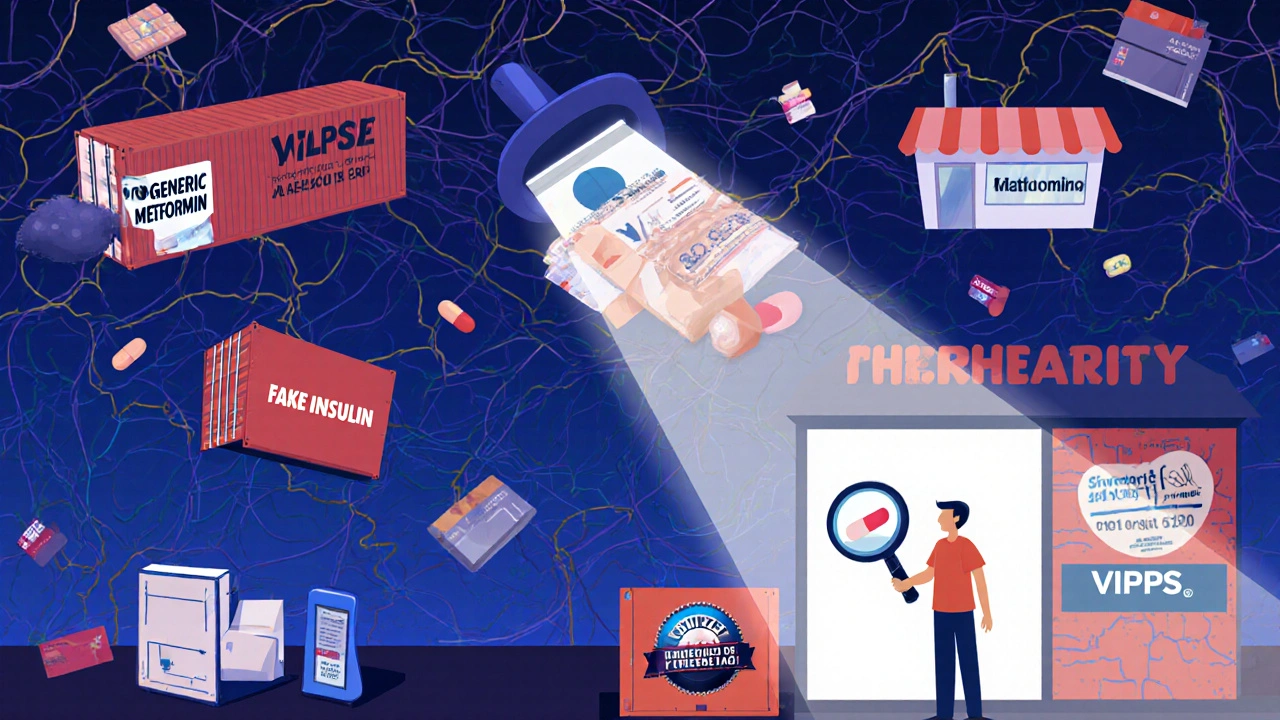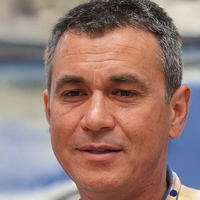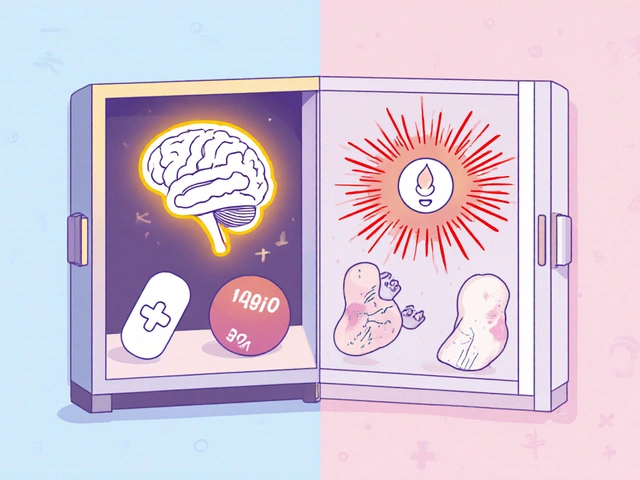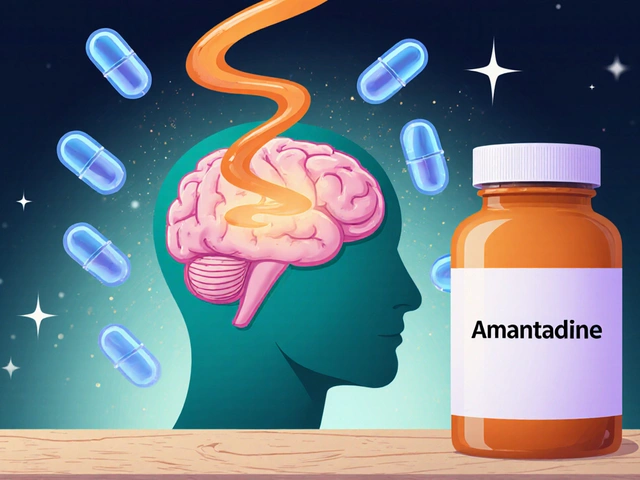Every year, millions of people buy generic medications to save money-drugs like metformin, lisinopril, or semaglutide (Ozempic)-thinking they’re getting the same quality as the brand name, just cheaper. But what if the pill in your bottle isn’t real? What if it has no active ingredient at all-or worse, something toxic? This isn’t science fiction. In 2024, over 6,400 cases of counterfeit medicines were uncovered worldwide, and the numbers keep rising. Fake generics are no longer just a problem in remote villages or shady online stores. They’re showing up in U.S. pharmacies, in packages labeled as "Canadian," and even in prescriptions filled through telehealth services. And the consequences? Treatment failure, organ damage, antibiotic resistance, and even death.
What Exactly Are Counterfeit Generics?
Generic drugs are legally produced copies of brand-name medications. They must meet strict standards: same active ingredient, same strength, same way of working in your body. The FDA and EMA require them to be bioequivalent-meaning they deliver 80-125% of the same amount of medicine into your bloodstream as the original. That’s why they work. Counterfeit generics break every rule. They’re made in unregulated labs, often in Asia or Eastern Europe, with no oversight. Some contain no active ingredient. Others have too little-say, 5% of the needed semaglutide instead of 1 mg. Some replace the real drug with dangerous chemicals like rat poison, industrial dyes, or even powdered cement. These aren’t just ineffective-they’re deadly. The most commonly faked drugs? Antibiotics, painkillers, erectile dysfunction pills, weight-loss meds like Ozempic and Wegovy, and even cancer drugs like Opdivo. In 2025, U.S. Customs intercepted counterfeit versions of these exact drugs coming from China, India, and Turkey. One Iowa pharmacy was fined $25,000 for selling fake Ozempic pens. That’s not an outlier. It’s a growing trend.How Do Counterfeits Slip Through the System?
You’d think pharmacies and regulators would catch these. But the system has cracks. Most counterfeit drugs enter through three main channels:- Online pharmacies without physical addresses-89% of these don’t require prescriptions, according to the FDA. Many look professional, with fake licenses and glossy websites.
- Illicit importation-bulk shipments of drugs like semaglutide enter the U.S. from unregistered foreign suppliers. Between September 2023 and January 2025, over 2,400 such shipments were flagged. Nearly 200 slipped through anyway.
- Compromised supply chains-even legitimate distributors can be tricked. A counterfeit batch might be mixed in with real ones during shipping or repackaged in fake containers.
How to Spot a Fake Generic (Real Signs You Can Check Today)
You don’t need a lab to spot a fake. Here’s what to look for-right now, before you take a pill:- Packaging errors-misspelled words, blurry logos, mismatched fonts, or odd colors. Real manufacturers don’t make typos. If "Ozempic" is spelled "Ozemip," walk away.
- Unusual pills-check the size, shape, color, and markings. If your generic metformin is now blue instead of white, or has a different imprint code, it’s wrong.
- No batch number or expiration date-every legitimate package has them. If it’s missing, it’s fake.
- Too cheap-authentic generics cost 80-85% less than brand names. If you’re seeing a 90% discount from a website, it’s a red flag. Counterfeiters sell for 30-50% below real generic prices to lure buyers.
- No verification code-many legitimate brands now include scratch-off codes or QR codes. Novo Nordisk’s "Verify Your Pen" system lets you scan your Ozempic pen and get an instant authenticity check. In Q3 2025, 2.1 million scans were done-and 1.8% were flagged as fake.

Where to Buy Safely (And Where to Avoid)
The safest place to get any medication? A licensed, local pharmacy. Not a website you found on Google. Not a Facebook ad. Not a "Canadian pharmacy" that doesn’t list its street address. Look for these trusted signs:- VIPPS seal-Verified Internet Pharmacy Practice Sites is a program run by the National Association of Boards of Pharmacy. Only legitimate U.S. online pharmacies earn this.
- Pharmacist on staff-if you can’t talk to a real pharmacist before or after your purchase, don’t buy.
- Requires a prescription-any pharmacy that sells Ozempic, insulin, or antibiotics without one is breaking the law.
- Physical address and phone number-if they won’t tell you where they’re located, they’re hiding something.
- Sell drugs without a prescription
- Ship from outside the U.S. or EU
- Don’t have a licensed pharmacist available
- Offer "miracle cures" or extremely low prices
What to Do If You Suspect a Fake
If you think you’ve been sold a counterfeit drug, don’t just toss it. Act.- Stop taking it-even if you feel fine, the damage may be internal.
- Save everything-the bottle, the receipt, the pills. Take photos.
- Report it-file a report with the FDA’s MedWatch program. They track fake drugs and warn others. You can do it online or by phone.
- Call the manufacturer-if it’s Ozempic, call Novo Nordisk. If it’s a generic from Pfizer, use their anti-counterfeiting hotline: 1-800-593-5685.
- Ask your pharmacy-they may be able to trace the batch or pull other suspect products.

What’s Being Done to Stop This?
Governments and companies aren’t sitting still. In 2019, the EU made it mandatory for all prescription drugs to have tamper-proof packaging and a unique identifier scanned at pharmacies. India now requires QR codes on every active ingredient container. The U.S. FDA issued new guidance in November 2025 requiring stricter checks on high-risk generics like semaglutide. Blockchain verification systems are being tested in 15 countries. They track each pill from factory to pharmacy-and have cut counterfeits by 22% in pilot zones. Pfizer has trained authorities in 164 countries to spot fakes. Interpol shut down over 13,000 illegal websites in just one operation in March 2025. But progress is uneven. Only 32% of pharmacies in low-income countries have access to verification tools. Criminals are using AI to create better fakes-mimicking logos, printing labels, even generating fake pharmacist reviews. The threat is evolving faster than defenses.Why This Matters More Than You Think
It’s not just about your next pill. Fake antibiotics are fueling a global crisis: antimicrobial resistance. When you take a drug that’s 10% effective, you don’t kill the bacteria-you train them to survive. The Review on Antimicrobial Resistance estimates that by 2050, 10 million people a year could die from infections that can’t be treated because of drugs like these. And it’s not just health. The global fake drug trade is worth $200 billion a year. That money funds organized crime, human trafficking, and even terrorism. Every fake pill you buy could be funding something far worse than a bad purchase.Final Checklist: Your 5-Minute Safety Routine
Before you take any generic medication, do this:- Check the packaging for spelling, logos, and expiration dates.
- Compare the pill to images on the manufacturer’s website.
- Verify the NDC number with the FDA’s database.
- Use manufacturer verification tools if available (e.g., Novo Nordisk’s app).
- Only buy from pharmacies with a VIPPS seal or a physical address you can visit.
How can I tell if my generic Ozempic is real?
Use Novo Nordisk’s official "Verify Your Pen" app. Scan the QR code on the pen. If it’s fake, the app will flag it. Also check the packaging: real pens have a smooth finish, precise text, and a unique batch number. Fake ones often have blurry printing, wrong colors, or misspellings like "Ozemip." If you bought it online without a prescription, it’s almost certainly fake.
Are all online pharmacies dangerous?
No-but 90% of those without a physical address are. Only trust online pharmacies with the VIPPS seal from the National Association of Boards of Pharmacy. These sites are licensed, require prescriptions, and have U.S.-based pharmacists. Avoid any site that offers "discounts" on controlled drugs without a prescription or ships from overseas.
Can fake medications make me sick?
Yes. Some contain toxic substances like rat poison, industrial dyes, or heavy metals. Others have no active ingredient, so your condition worsens. In Nigeria, counterfeit malaria drugs caused liver failure. In South Africa, fake insulin led to diabetic comas. Even if you don’t feel sick right away, long-term exposure can cause organ damage or drug resistance.
Why are counterfeit generics so common now?
The demand for cheap meds exploded during the pandemic, and criminals saw an opportunity. They use AI to copy packaging, exploit weak border controls, and sell through fake websites. With global supply chains stretched thin and online sales booming, it’s easier than ever to slip fakes into the system. The Pharmaceutical Security Institute reports a 38% jump in incidents from 2020 to 2024.
What should I do if I already took a fake pill?
Stop taking it immediately. Contact your doctor or pharmacist to discuss your symptoms and next steps. Report the incident to the FDA’s MedWatch program. Save the packaging and pill as evidence. If you’re on a life-saving drug like insulin, antibiotics, or cancer meds, don’t wait-get medical help right away.





November 20, 2025 AT 15:42 PM
This is terrifying. I just bought Ozempic from a "Canadian" site last month. I thought I was saving money. Now I’m sitting here staring at my pen like it’s a ticking bomb. I’m not even sure if I should take the next dose. My doctor’s office is closed today. I feel like I’ve been poisoned by a Facebook ad.
November 20, 2025 AT 18:50 PM
Bro, I’ve been buying my generics from the same online pharmacy for 3 years. They’re cheap, fast, and I’ve never had an issue. Maybe I’m lucky? Or maybe you’re just scared of everything now? 😅
November 21, 2025 AT 08:47 AM
Wait… so if the pill looks right, but the app says it’s fake… does that mean the packaging is *better* than the real thing? I mean, if AI can make a perfect fake… how do we even win? I just checked my metformin. It looks fine. But now I’m paralyzed. What if I’ve been taking poison for months? 😰
November 23, 2025 AT 02:20 AM
OMG I just scanned my Ozempic pen and it came back REAL. I cried. I literally cried. Thank you for this post. I was about to buy more from that "discount pharmacy" on Instagram. Now I’m calling my local CVS. You saved my life, stranger. 🙏❤️
November 23, 2025 AT 14:13 PM
The global pharmaceutical supply chain requires structural reform. The current regulatory fragmentation enables systemic vulnerability. Consumers must be empowered through verifiable digital identity protocols for each pharmaceutical unit. This is not a consumer issue. It is a public health infrastructure failure.
November 24, 2025 AT 07:52 AM
So you’re telling me I can’t get my diabetes meds off Amazon? Like, what’s next? Can’t buy insulin at the gas station? I’m not some rich dude with a private doc. I work two jobs. I need cheap. If the feds wanna stop fakes, maybe stop letting Big Pharma charge $1k a pen. Fix the system, not the people.
November 24, 2025 AT 21:37 PM
Let’s be honest - this is all a distraction. The real threat is the U.S. government’s collusion with Big Pharma to suppress generic competition. They create artificial scarcity, then blame "foreign criminals" for the shortages. The counterfeit market exists because the legal one is rigged. The FDA? A corporate shell. The WHO? A puppet. Wake up.
November 26, 2025 AT 07:45 AM
India makes 40% of the world’s generics. You think we don’t know what’s going on? 😒 The U.S. buys cheap because it’s greedy. Now you’re mad when the cheap stuff turns out to be garbage? Welcome to capitalism, bro. Also, your "Verify Your Pen" app? It’s probably fake too. 😏
November 28, 2025 AT 02:37 AM
Why are we even talking about this? The answer is simple: ban all foreign meds. Lock down the borders. Only U.S.-made drugs are safe. If you can’t afford it, go get a better job. No one’s forcing you to buy from China. This is a national security issue. We’re letting our medicine be poisoned by foreign trash. It’s embarrassing.
November 28, 2025 AT 09:12 AM
Okay, but have you considered that the real issue is the pharmaceutical-industrial complex? They *want* you to fear counterfeits so you’ll keep paying $800 for Ozempic. Meanwhile, they outsource production to the same countries they’re now calling "dangerous." It’s a psychological control mechanism. The fake pills are a symptom. The disease is profit-driven healthcare.
November 28, 2025 AT 21:48 PM
I’m a pharmacist in Ohio. I’ve seen this up close. Last month, a patient came in with a bottle of "generic insulin" she bought online. The label said "Novo Nordisk" but the bottle was slightly wider. The cap didn’t click right. She was terrified. We called the manufacturer - turned out it was a fake batch from a shipment that got mixed in during transit. She’s fine now, but she’s been on insulin for 12 years. This isn’t a "what if." It’s happening every week. Please, if you’re buying meds online - don’t. Just don’t.
November 30, 2025 AT 19:28 PM
Thank you for this. I’ve been telling my friends for months: if it’s too good to be true, it’s a trap. I used to buy my metformin from a site that charged $10 a bottle. Now I get mine at Walmart for $4. I don’t care if it takes an extra 10 minutes. My life isn’t worth saving $30. You don’t need to be a genius to avoid this - just careful. And if you’re unsure? Ask your pharmacist. They’re not there to upsell you. They’re there to keep you alive.
December 2, 2025 AT 12:18 PM
Just a quick note: I bought my semaglutide from a "Canadian" site last year. I didn’t check anything. I just trusted the reviews. My blood sugar went nuts. I didn’t realize until I saw this post. I’m so sorry I didn’t listen to my gut. If you’re reading this and thinking "it won’t happen to me" - please, just stop. Go to a real pharmacy. It’s not a hassle. It’s your life.